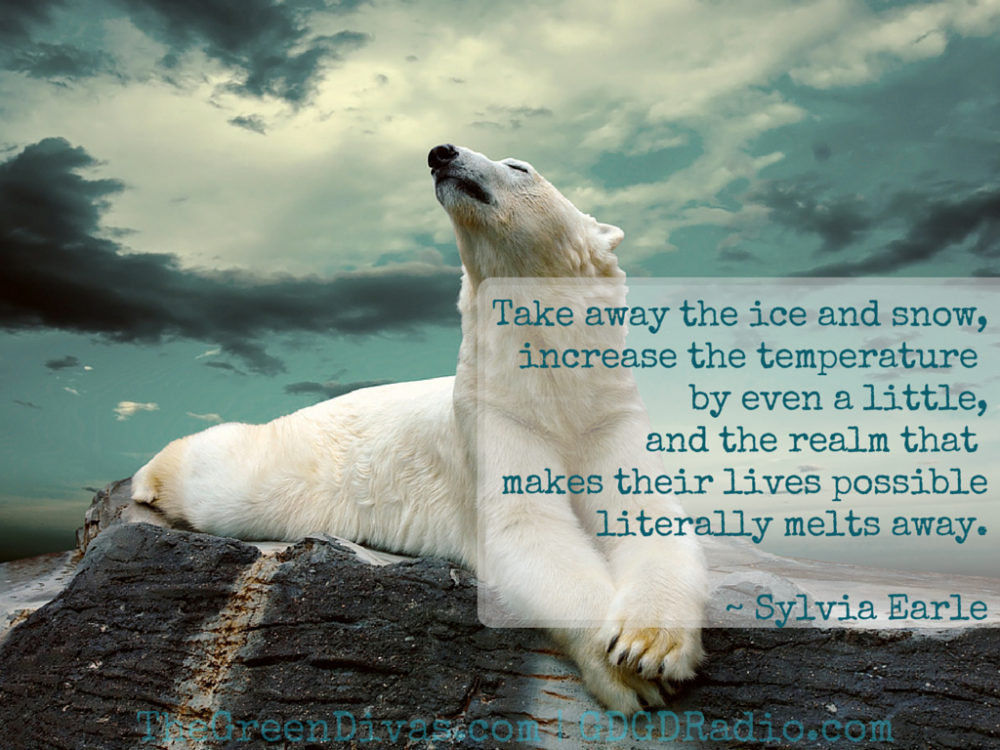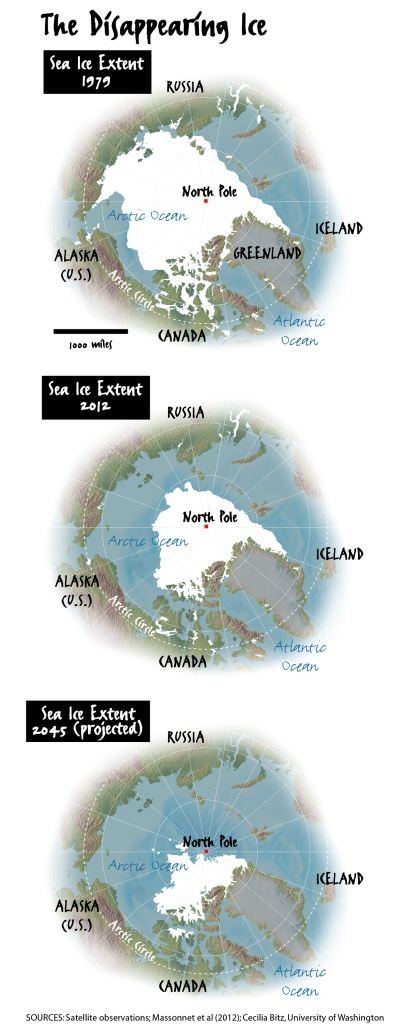
Big changes have been happening in the Arctic, meaning bad news for the polar bears…and for the rest of us.
Listen to this episode of The Green Divas Radio Show! A fascinating interview with Sabrina Shankman (around minute 40). She’s a producer and reporter for InsideClimate News and author of “Meltdown: Terror at the Top of the World” about a hiker/explorer who was attacked by a polar bear. Listen up then read on to learn more. ~ Ed.
Inside the making of Meltdown: Terror at the Top of the World
by Sabrina Shankman, InsideClimate News
In August 2013, David Sassoon, the publisher of InsideClimate News, got a call from a friend, Larry Rodman, who shared a story about a harrowing experience he’d had on a backpacking trip to Canada’s Arctic tundra. A polar bear had attacked a member of Rodman’s group. The victim, a legal aid attorney named Matt Dyer, had survived—but just barely.
A few weeks later, I started working at ICN and David asked if I would look into it and maybe write something for the site. More than a year later, that something turned into Meltdown: Terror at the Top of the World, an e-book we released last November (for a free excerpt, click here).
Rodman’s role in the project was crucial. He introduced me to the other six group members, helping me build the trust and relationships that ultimately allowed me to tell this story. (Six months later, Rodman joined the InsideClimate News board of directors.)
As I listened to each person’s account of the events, I was struck by the fact that this survival story was also a story of friendship and a bond that was born in the wilderness and solidified by a horrifying experience. But what elevated this story from a quick recounting of a backpacking trip-gone-wrong to a yearlong project was something I learned in my first days of reporting: That polar bear biologists have been predicting for years that as the bears lose their habitat, the sea ice, their interactions with humans will increase. With temperatures rising faster in the Arctic than the rest of the world and sea ice melting at unprecedented rates, this prediction is no longer hidden in the pages of scientific journals. It’s happening now.
Watch the video Polar Bear Man Returns to the Arctic:
VICE and InsideClimate News returned with Matt to one of the wildest regions in the world—Canada’s Torngat Mountains, where 10 percent of the world’s polar bears live—to investigate why climate change is causing more polar bears to attack humans.
The experts…
I interviewed almost two dozen scientists for this project—polar bear biologists, sea ice modelers and experts on Arctic ecosystems. Many spent hours on the phone with me, patiently breaking down complex concepts so I could accurately explain them to a general audience. Capturing the nuances of the science was essential, and I had to make sure I didn’t let any inaccuracies sneak in. In the final weeks before publication, I confirmed with each scientist that the language I was using remained scientifically accurate.
One of the complicated things about reporting about polar bears, I learned, is that while some polar bear populations are in trouble now (a recent report on bears in the southern Beaufort Sea of Alaska found the population declined 40 percent in the first decade of this century), scientists say the real trouble is coming down the line.
The attacks are just one symptom of the bears’ uncertain future. Their habitat is disappearing at an alarming rate. Almost 700,000 square miles of sea ice have vanished from the Arctic since the late 1970s, and climate models project the Arctic will have its first ice-free summer by the middle of this century. Because polar bears have evolved to live and hunt on the ice, biologists project that two-thirds could be gone by then.
A turning point in the project came in mid-August, when I traveled from New York City to the Torngats with Matt Dyer and the crew from VICE. It was barely a year since the attack, and Matt was searching for closure. It’s not a choice that many would have made—to return to the place where you were almost killed—but it seemed an easy one for him.
Seeing it myself…
The trip was incredible on a number of levels. It’s hard not feel like the luckiest person alive when your work sends you on a reporting trip to a dream location. I mean: roaming polar bears, massive icebergs and the freshest Arctic Char—a few of which I caught myself. Pinch me. It is the most beautiful place I have ever been. Despite what happened on the trip that I write about in “Meltdown,” I would definitely recommend traveling to the Torngats, though I’d suggest taking the precautions we did: hire a bear guard and sleep on a boat, not on the land.
While in the Torngats, I had the chance to get to know Matt. Everyone—from the locals and Parks Canada staff to the VICE crew and myself—was impressed by his desire to return to the scene of his terrifying ordeal. He never lost his sense of humor, but he also allowed himself to embrace the enormity of what he’d been through.
It was important to me that in making Matt the subject of this project I didn’t subject him to yet another trauma. From our first email exchange in 2013 until the day before publication, I was as transparent with him as possible, so there were no surprises along the way. I also checked and double-checked with the other group members, to make sure I captured their experiences accurately. For the most part, their memories aligned. When discrepancies arose, I often turned to the impeccable notes that the Sierra Club trip leaders, Marta Chase and Rich Gross, kept before, during and after their adventure.
One of the many memorable experiences I had in the Torngats was meeting Maria and Eli Merkuratsuk, a sister and brother team of Inuit bear guards who provided insight that colored everything I later wrote. They had grown up spending summers in the same fjord where Matt was attacked, and they described in vivid detail how much the landscape—and their own place in that landscape—had changed since the melting began. Talking with them drove home the point the scientists had made, that “Meltdown isn’t just a story about polar bears—it’s a story about me, and you and every other creature on the earth.
Bonus:
Listen to the latest Green Divas myEARTH360 Report for more about what’s going on with the environment…
You can listen to the latest Green Divas Radio Show—and other green and healthy living podcasts—on GDGDRadio.com (or get the GDGD Radio app)!
 Sabrina Shankman is a producer and reporter for InsideClimate News. Her work has been honored by the Society of Professional Journalists and the Society of Environmental Journalists, and she was named a finalist for the Livingston Awards for Young Journalists in 2010. You can connect with her on twitter @shankman.
Sabrina Shankman is a producer and reporter for InsideClimate News. Her work has been honored by the Society of Professional Journalists and the Society of Environmental Journalists, and she was named a finalist for the Livingston Awards for Young Journalists in 2010. You can connect with her on twitter @shankman.
[dynamic-sidebar id=’Custom Widget 2′]